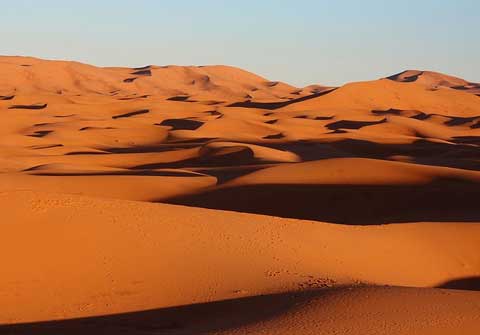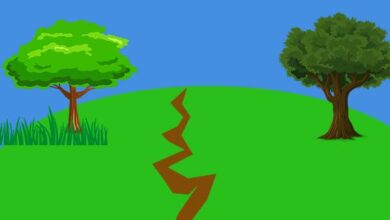Study finds multiple ancient river systems in Sahara Desert

Sahara Desert, the world’s largest Sahara Desert, was full of greenery thousands of years ago. The evidence from recent excavations has shown that the area of Sahara Desert used to be full of Biodiversity. Prehistoric evidences also found a painting of a stone cave cave in which humans are seen swimming. Recently, the history of the Sahara Desert area was revealed in more detail through the excavation of sediments of the Mediterranean Sea and Climate Computer Modeling.
Knowledge of the history of 1.6 million years
This area was studied for the first time by a team of international researchers, including Cecile Blanchet of the German Research Center for Geosciences, and Tobias Friedrich, University of Hawaii’s researcher at Manoa. In this study published in Nature Geoscience, researchers got to know the story of major environmental changes in North Africa from the layers of the sea floor in the history of the last 1.6 million years.
A team of scientists with the GEOMAR Helmholtz Center of Ocean Ocean Research went to the Libyan Gulf of Sidra for research. Blanchett said that she suspected that when the Sahara desert used to be green, the current dry river must have been active and then particles from the Gulf of Sidra might have flowed from them.
Study of 30 foot deep marine sediments
Studying such depressions can help in getting a better understanding of the conditions and timing of these rivers being reactivated. Along with this, information about climate aspects of human population development will also be available in that period. Researchers used piston coring methods to extract huge cylinders buried in the ocean floor and a 30-foot deep column of sea soil.
Analysis of marine sediments
It contained particles of sediment in soil layers and remains of plants from the nearby African continent. But at the same time there were microorganisms found in the sea water, from which the story of climate change in history was also being known. “By combining the depression analysis with the results of computer simulations, we were able to understand the climatic processes that could explain the change in North Africa’s environment over the last 1.6 million years,” said Friedrich.
Dry terrain of rivers
It was known from the works done before now that many rivers in this region have been flowing at different times, but today it is one of the driest regions of the earth. In this way, it was widely known from this research that when and how much rain was sufficient in the Central Sahara to reactivate these rivers.
These changes changed the area on Earth
Blanchett said that her team found that a slight change in the Earth’s orbit and the weakening and strengthening of polar ice sheets led to changes in moisture and heavy rains and prolonged droughts. The fertile phase usually lasted five thousand years and the humidity spread to the coasts of North Africa and the Mediterranean.
There was a huge change in the conditions of life for the people of that time, which led to a large number of migrations from North Africa. This study is very important for the current climate change.









